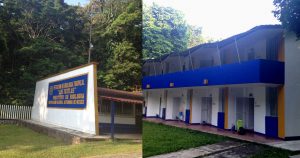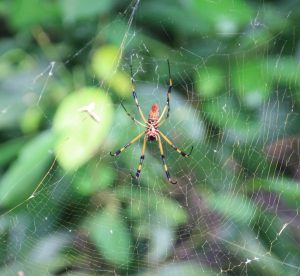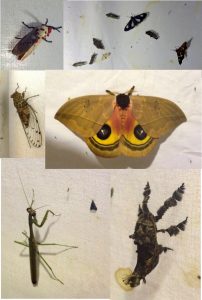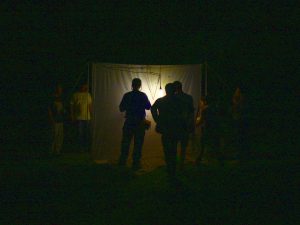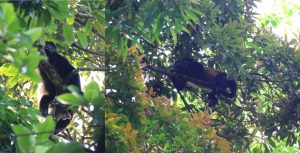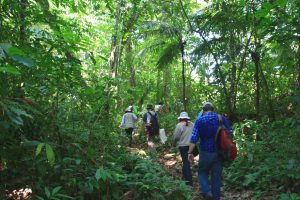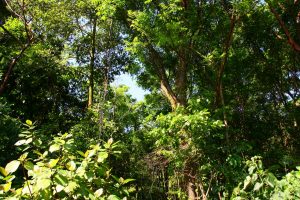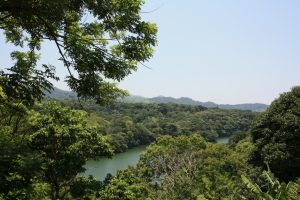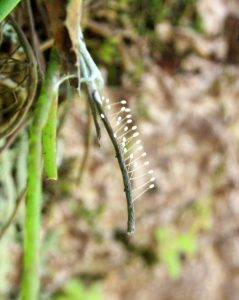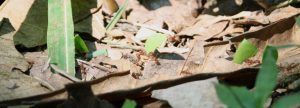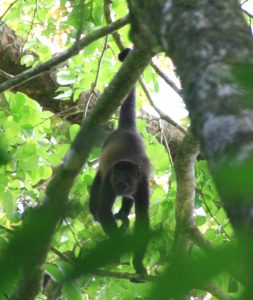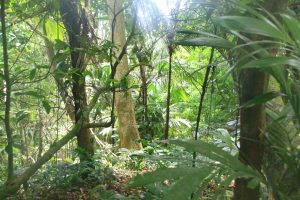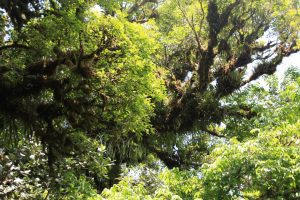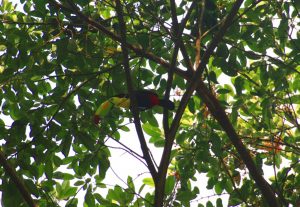On the 16th of May, the day after the International Symposium on Neuropterology had finished (see my previous post for a review of the symposium), many of the symposium attendees boarded a coach for the journey to the Instituto de Biología’s Los Tuxtlas field station, for the post symposium field trip. The field station, which contains dormitories, dining room, library, and scientific collections, is located within the rainforest in the Biosphere Reserve Los Tuxtlas, southern Veracruz. I have always wanted to visit a rainforest, so this was a dream come true.
After disembarking from the coach, I was hit by the hot temperature, humidity, the fresh air (which was nice after staying in Mexico City), and also the unbelievable, loud, constant sound coming from the rainforest, made by cicadas, birds and other wildlife. We were allocated our rooms, which had ceiling fans (these were much appreciated) and mosquito screens, the room I was in was fortunate not to have any noticeable spiders in – however on the last night a scorpion was found walking around. The rooms themselves were basic but quite comfortable.
In the evening, we were briefed about the potential dangers of the rainforest, in particular, a dangerous snake that isn’t afraid of humans and is difficult to spot due to its perfect camouflage with the leaf litter. Also, the light traps were set up at various places across the field station site: near streams and on the forest edge. The traps were made up of a white sheet hung up or fixed to a frame with a light source. When dark, insects are attracted to the light, and being in a rainforest, a good diversity of insects were observed, including many moths, preying mantises, cicadas, beetles, some neuropterans (including mantispids), and megalopterans.
The next morning, after being woken early by the sound of Howler monkeys, doing as their name suggests, we had breakfast (including vegan food – a vegan option was offered every day for every meal, which was splendid), applied sun cream, insect repellent (always seems a strange thing for entomologists to put on), and set off for a walk through the forest, to see what insects (and other wildlife) could be found.
The forest was spectacular, with a great variety of plants and wildlife. In parts, the foliage of the trees and plants were quite dense with little light getting through, there were also lots of vines reaching down to the floor from many of the trees. The scenery was also fantastic, at a high point on the trail we even had a view of the sea (we were 5km from the Gulf of Mexico). Many insects were found, including a few neuropterans, many beetles, leaf cutter ants, and butterflies were seen flying past, including the very large morpho butterfly and many smaller colourful species.
On the second day we hiked through a different part of the forest, up a steep hill; this was indeed an experience, with the high heat and humidity. Here the forest was denser than the previous day, with narrower trails. A large leaf cutter ant nest was found, with their cleared trails leading to it (almost like little motorways, with a steady stream of traffic). Other insects were also found from sweeping the vegetation with nets, including a few neuropterans. A pheromone trap was set up, which managed to attract some orchid bees. Howler monkeys were also present high in the trees looking down at us, however only a few birds were seen due to the dense foliage. The steep path eventually opened up into a clearing giving spectacular views over a lake with Great Frigate Birds and Black Vultures flying over, the Gulf of Mexico could also be seen. On the way back we had a rather long scenic diversion through dense rainforest, but we did manage to get back safely to the station for a late lunch.
The final day was a trip to a cloud forest (a moist tropical or
subtropical forest that is characterized by persistent low-level cloud) around an hour drive from the field station, which at this time of year unfortunately didn’t have any cloud. The first locality was along a gravel road (the gravel was made of basaltic rocks) with forest on
either side, the trees were covered in epiphytes (a plant that grows harmlessly on another plant); this is due to the forest’s high moisture content being a perfect environment for these plants. Lots of hoverflies were seen and heard making a loud buzzing sound in places where the sun managed to break through, other insects were also found including beetles, wasps, and stick insects. Birds again were difficult to see due to the dense foliage and also the epiphytes on every branch. The second locality in the cloud forest was on a wide trail leading into the forest, here mosquitoes were very numerous, and from sweeping the vegetation with nets, many insects were found including a few neuropterans. In the evening, back at the field station, after dinner, the light traps were taken down and everything was packed for our return to Mexico City on the next day.
Insects from the cloud forest
During the symposium in Mexico City and in the rainforest I managed to sporadically indulge my love of birdwatching. I managed to see 28 species, the vast majority were completely new to me. Some of the highlights include the Keel-billed Toucan, Montezuma Oropendula (and their strange long pendulum-like nests), Red-legged Honeycreeper, Violaceous Trogon, Blue Crowned Mot-Mot, Collared Aracari, and many hummingbirds.
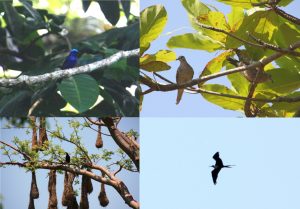
A montage of birds from Los Tuxtlas. top left: Red-legged Honeycreeper, top right: Inca Doves, bottom left: Montezuma Oropendula with nests, bottom right: Great Frigate Bird
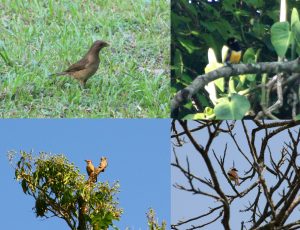
More Los Tuxtlas Birds. top left: Clay-coloured Thrush, top right: Violaceous Trogon, bottom left: Golden-fronted Woodpecker, bottom right: Great Kiskadee
This was a really enjoyable trip – it was great to be in a rainforest seeing all the diverse wildlife and plants, which I had previously only seen in books or on wildlife documentaries. I also learned a lot about how insects are collected in the field, being a palaeoentomologist, I have not had much exposure to this. The organizers of the trip (Atilano Contreras-Ramos and his team) and the field station staff were brilliant, and did an excellent job, making the trip interesting, comfortable, and very enjoyable.

